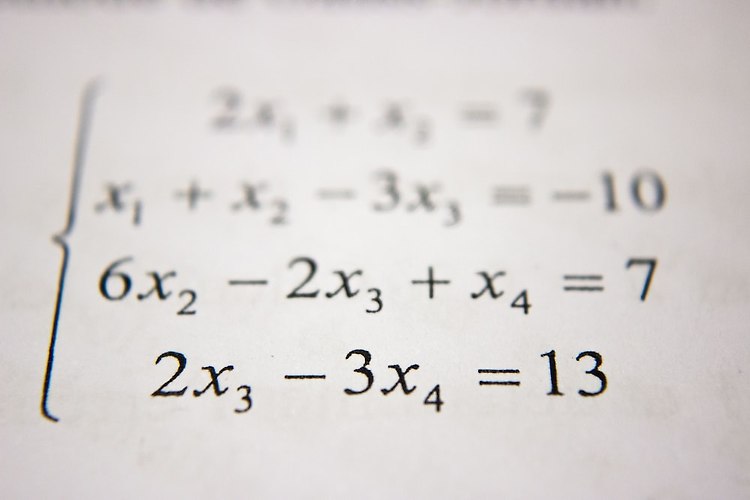

The universe is full of mysteries, but some of the most intriguing are the ones that can be solved with mathematical precision. Quadratic equations, with their parabolic curves and elegant solutions, are a prime example of this. Whether you are a student, teacher, or researcher, understanding the intricacies of quadratic equations is essential to unlocking their secrets and discovering new applications in fields such as physics, engineering, and finance.
Introduction
Quadratic equations are a fundamental concept in algebra and are used to model real-world phenomena. These equations take the form $ax^2 + bx + c = 0$, where $a$, $b$, and $c$ are constants. Quadratic equations can be solved using a variety of methods, including factoring, the quadratic formula, and completing the square.
Definitions
- Quadratic Equation: A quadratic equation is a polynomial equation of degree 2, of the form $ax^2 + bx + c = 0$, where $a$, $b$, and $c$ are constants.
- Parabolic Curve: The graph of a quadratic equation is a parabolic curve.
- Discriminant: The discriminant of a quadratic equation is a value calculated from the coefficients of the equation and is represented by $b^2 - 4ac$. It determines the number and type of solutions to the equation.
- Real Solutions: A quadratic equation has real solutions if its discriminant is greater than or equal to 0.
- Complex Solutions: A quadratic equation has complex solutions if its discriminant is less than 0.
Theorems
- The Quadratic Formula: The quadratic formula is an equation that gives the solutions to a quadratic equation. It states that if $a$, $b$, and $c$ are constants in a quadratic equation $ax^2 + bx + c = 0$, then the solutions to the equation are given by:
$$x = \frac{-b \pm \sqrt{b^2 - 4ac}}{2a}$$
- The Zero-Product Property: The zero-product property states that if the product of two factors is equal to zero, then at least one of the factors must be equal to zero. This property can be used to solve quadratic equations by setting one of the factors equal to zero and solving for the variable.
Properties
- Vertex Form: A quadratic equation can be written in vertex form, which is of the form $y = a(x - h)^2 + k$, where $(h, k)$ is the vertex of the parabolic curve.
- Axis of Symmetry: The axis of symmetry of a parabolic curve is a line that divides the curve into two congruent halves. The axis of symmetry is always the vertical line that passes through the vertex of the curve.
- Minimum/Maximum Value: The minimum or maximum value of a parabolic curve is the y-coordinate of its vertex.
Example
Consider the quadratic equation $x^2 - 6x + 8 = 0$.
- Factor the equation:
First, we can factor the equation as:
$(x - 4)(x - 2) = 0$
- Use the zero product property:
The zero product property states that if the product of two numbers is zero, then at least one of the numbers must be zero.
So, if $(x - 4)(x - 2) = 0$, then either $x - 4 = 0$ or $x - 2 = 0$.
- Solve for x:
If $x - 4 = 0$, then $x = 4$.
If $x - 2 = 0$, then $x = 2$.
Therefore, the solutions to the equation are $x = 4, 2$.
- Verify the solutions:
To verify the solutions, we can plug them back into the equation and see if they make it true.
For $x = 4$,
$$4^2 - 6(4) + 8 = 16 - 24 + 8 = 0$$
For $x = 2$,
$$2^2 - 6(2) + 8 = 4 - 12 + 8 = 0$$
For the equation $x^2 - 6x + 8 = 0$, we have:
$a = 1, b = -6, c = 8$
Plugging these values into the formula, we get:
$x = \frac{-(-6) \pm \sqrt{(-6)^2 - 4(1)(8)}}{2(1)}$
$x = \frac{6 \pm \sqrt{36 - 32}}{2}$
$x = \frac{6 \pm \sqrt{4}}{2}$
$x = \frac{6 \pm 2}{2}$
Therefore, the solutions to the equation are:
$x = \frac{6 + 2}{2} = 4$
$x = \frac{6 - 2}{2} = 2$
So, the solutions to the equation $x^2 - 6x + 8 = 0$ are $x = 4, 2$.
Applications
Quadratic equations are used in a wide range of applications, including:
- Physics: In physics, quadratic equations are used to model the motion of objects under the influence of gravity, such as projectiles.
- Engineering: In engineering, quadratic equations are used to design and analyze structures, such as bridges and towers.
- Finance: In finance, quadratic equations are used to model and analyze investment strategies, such as stock prices and bond yields.
- Mathematics: In mathematics, quadratic equations are used as a starting point for studying more advanced concepts, such as polynomial equations and complex numbers.
Conclusion
Quadratic equations are a fascinating and versatile concept in mathematics that have numerous real-world applications. By understanding the definitions, theorems, properties, and techniques for solving quadratic equations, one can unlock the secrets of these elegant equations and apply them to a wide range of problems. Whether you are a student, teacher, or researcher, a deep understanding of quadratic equations is a valuable tool in your mathematical arsenal.

You know what's cooler than magic? Math.
포스팅이 좋았다면 "좋아요❤️" 또는 "구독👍🏻" 해주세요!



